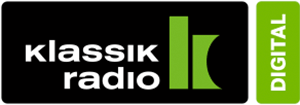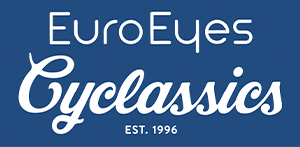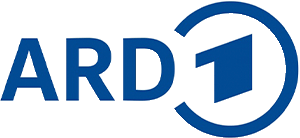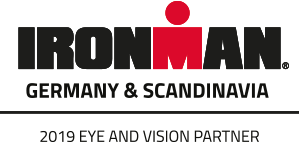Refractive Lens Exchange (RLE): Clear Vision for Life
In a refractive lens exchange, the eye’s natural lens is replaced with a high-quality artificial lens to permanently correct presbyopia or significant refractive errors. With modern multifocal lenses, you can enjoy sharp vision both near and far – without reading glasses or varifocals. This method is especially recommended for people aged 48 and over who desire true visual freedom.
EuroEyes is known from press & media worldwide.
What is a refractive lens exchange (RLE)?
Refractive lens exchange replaces the eye’s natural lens with a high-quality artificial lens. This allows presbyopia and significant refractive errors to be permanently corrected. The procedure provides clear and stable vision at all distances and enables you to live a life free from glasses.
:quality(auto))
:quality(auto))
What makes a refractive lens exchange (RLE) special?
This treatment is ideal for people whose natural lens has lost its elasticity. With modern multifocal artificial lenses, you can once again see clearly at both near and far distances – without reading glasses. At the same time, the procedure helps prevent cataracts and ensures long-lasting clear vision along with a new sense of freedom.
Is a refractive lens exchange (RLE) right for me?
Refractive lens exchange is particularly suitable for people aged 48 and over who wish to correct presbyopia and live without glasses. Even in cases of significant refractive errors or when laser eye surgery is not an option, this procedure offers a safe and long-lasting solution for glasses-free vision.
:quality(auto))
:quality(auto))
How does a refractive lens exchange (RLE) work?
During the treatment, the eye’s natural lens is gently removed and replaced with a multifocal artificial lens. This ensures that light is optimally focused again, allowing you to see clearly at all distances. The procedure is painless, takes only a few minutes, and provides long-term glasses-free vision.
The advantages of a lens exchange
For presbyopia
A refractive lens exchange provides a permanent correction of presbyopia. This means you will no longer depend on reading or varifocal glasses, even in later life.
Premium lenses
Our multifocal intraocular lenses provide sharp vision at all distances – whether near, intermediate or far – and thus replace your varifocal glasses.
Lifelong clear vision
Visual acuity steadily decreases with age. After a refractive lens exchange, however, you will no longer depend on visual aids for the rest of your life.
For severe refractive errors
Refractive lens exchange is suitable for high hyperopia, high myopia or even a combination of several severe refractive errors.
Neither visible nor noticeable
The artificial lens is not visible in the eye and, once fully healed, not noticeable either – for a whole new sense of freedom and maximum quality of life.
Our Ophthalmologists at EuroEyes
The best of the best: At EuroEyes, you are cared for by highly specialised ophthalmologists. All procedures are performed by surgeons who independently carry out at least 1,000 operations per year. As so-called high-volume surgeons, they are among the most experienced eye surgeons in all of Europe. Since 2012, the ophthalmologists of the EuroEyes team have been consistently listed among the “FOCUS Top Physicians” and provide you with outstanding service and expertise.
Book your appointment now!
Or simply call us free of charge.
Hotline: +41 52 588 02 51
Frequently asked questions
Here you will find the most important questions and answers about laser eye and lens treatments at EuroEyes. If you have any further questions or need additional information, please feel free to contact us.
Laser eye surgery or lens exchange?
Whether laser treatment or refractive lens exchange is better suited to correct your refractive error depends on various factors. However, if you are over 45 and presbyopia is to be corrected, refractive lens exchange is usually the better option, as it prevents the progression of presbyopia.
At what age is a lens exchange suitable?
A refractive lens exchange is most commonly used to correct presbyopia, which typically begins around the age of 45. In selected cases, however, the treatment may also be an option to correct severe, non-age-related refractive errors and is in principle possible once you are of legal age.
How long does an artificial intraocular lens last?
The artificial lens implanted during refractive lens exchange remains in the eye for a lifetime. As it replaces the natural lens, refractive errors are corrected in the long term, providing clear vision even into advanced age.
What risks are associated with a lens exchange?
A refractive lens exchange is a proven and safe method for treating presbyopia. If visual acuity after the treatment differs from the desired result, it can, if necessary, be corrected with a laser procedure. Eye conditions such as an infection may occur in rare cases after the treatment and can be treated.
How much does a refractive lens exchange cost?
A refractive lens exchange at EuroEyes costs CHF 4,480 per eye and can be paid either in full or conveniently in instalments. The fixed price includes all preliminary and main examinations as well as follow-ups. Costs are incurred only if you decide to undergo treatment with us.
What can I expect after the treatment?
During the first 24 hours after the procedure, the eye recovers noticeably and visual acuity gradually improves. However, it may take a few weeks until optimal and stable vision is achieved. As a rule, you will be able to return to your usual activities the day after the procedure, but these should be limited to a reasonable extent. Strenuous activities should be avoided in any case. You should allow your eye to rest.


























:quality(auto))
:quality(auto))
:quality(auto))